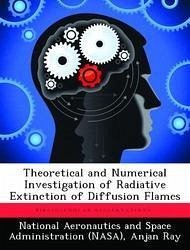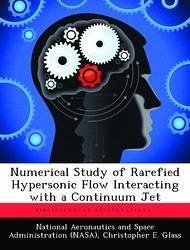Nicht lieferbar

Theoretical and Numerical Investigation of Radiative Extinction of Diffusion Flames
Versandkostenfrei!
Nicht lieferbar
The influence of soot radiation on diffusion flames was investigated using both analytical and numerical techniques. Soot generated in diffusion flames dominate the flame radiation over gaseous combustion products and can significantly lower the temperature of the flame. In low gravity situations there can be significant accumulation of soot and combustion products in the vicinity of the primary reaction zone owing to the absence of any convective buoyant flow. Such situations may result in substantial suppression of chemical activities in a flame, and the possibility of a radiative extinction...
The influence of soot radiation on diffusion flames was investigated using both analytical and numerical techniques. Soot generated in diffusion flames dominate the flame radiation over gaseous combustion products and can significantly lower the temperature of the flame. In low gravity situations there can be significant accumulation of soot and combustion products in the vicinity of the primary reaction zone owing to the absence of any convective buoyant flow. Such situations may result in substantial suppression of chemical activities in a flame, and the possibility of a radiative extinction may also be anticipated. The purpose of this work was to not only investigate the possibility of radiative extinction of a diffusion flame but also to qualitatively and quantitatively analyze the influence of soot radiation on a diffusion flame. In this study, first a hypothetical radiative loss profile of the form of a sech(sup 2) was assumed to influence a pure diffusion flame. It was observed that the reaction zone can, under certain circumstances, move through the radiative loss zone and locate itself on the fuel side of the loss zone contrary to our initial postulate. On increasing the intensity and/or width of the loss zone it was possible to extinguish the flame, and extinction plots were generated. In the presence of a convective flow, however, the movement of the temperature and reaction rate peaks indicated that the flame behavior is more complicated compared to a pure diffusional flame. A comprehensive model of soot formation, oxidation and radiation was used in a more involved analysis. The soot model of Syed, Stewart and Moss was used for soot nucleation and growth and the model of Nagle and Strickland-Constable was used for soot oxidation. The soot radiation was considered in the optically thin limit. An analysis of the flame structure revealed that the radiative loss term is countered both by the reaction term and the diffusion term.









